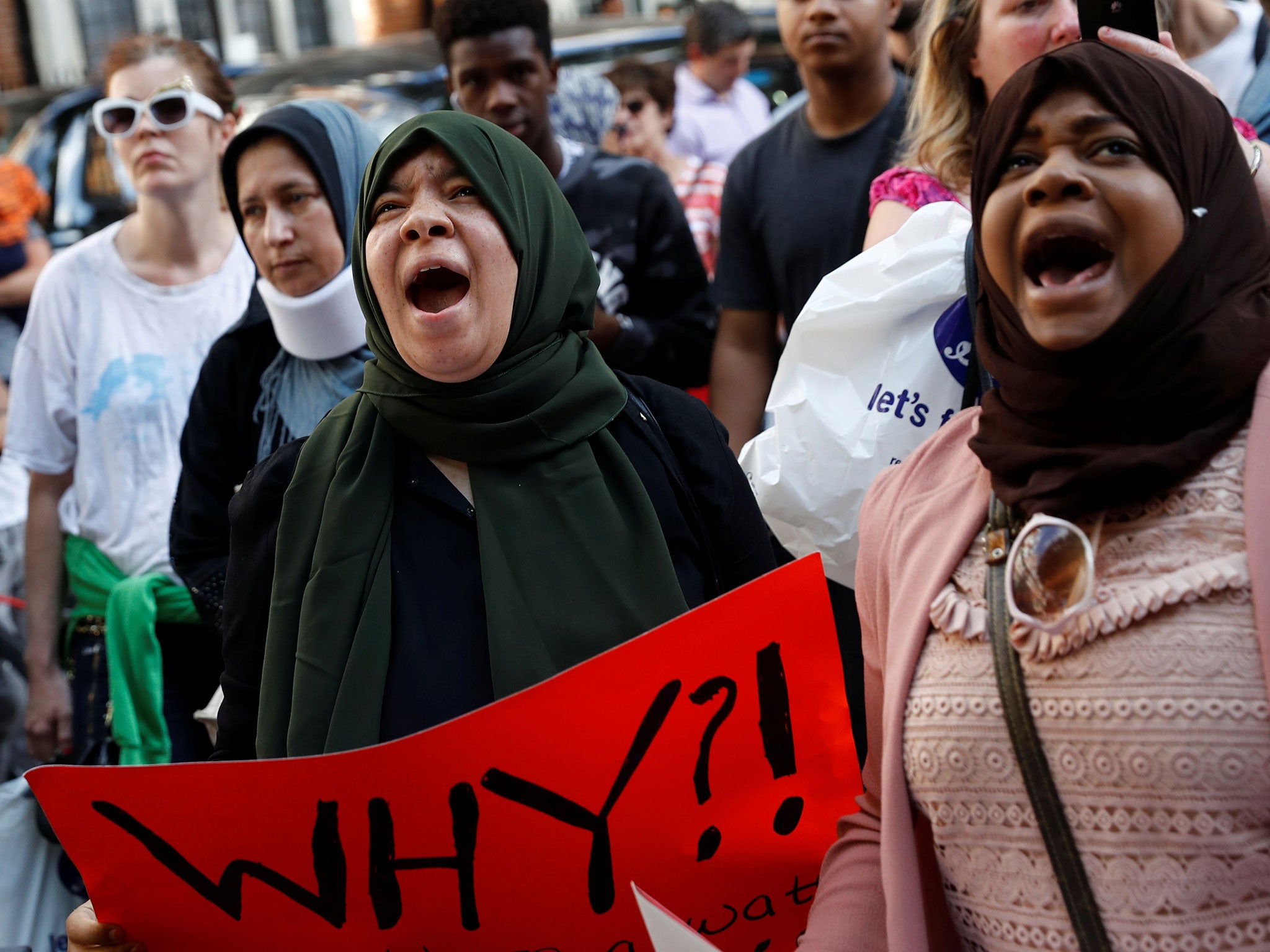Kensington council's £274m reserves caused outrage after the Grenfell Tower fire. The truth is even worse
Local councils are often criticised for building up significant cash reserves – and for borrowing money to plug day-to-day spending shortfalls. But they have been forced into difficult choices by savage cuts by central government


Your support helps us to tell the story
From reproductive rights to climate change to Big Tech, The Independent is on the ground when the story is developing. Whether it's investigating the financials of Elon Musk's pro-Trump PAC or producing our latest documentary, 'The A Word', which shines a light on the American women fighting for reproductive rights, we know how important it is to parse out the facts from the messaging.
At such a critical moment in US history, we need reporters on the ground. Your donation allows us to keep sending journalists to speak to both sides of the story.
The Independent is trusted by Americans across the entire political spectrum. And unlike many other quality news outlets, we choose not to lock Americans out of our reporting and analysis with paywalls. We believe quality journalism should be available to everyone, paid for by those who can afford it.
Your support makes all the difference.“Unacceptable” seems like an understatement when used to describe the financial practices of the Royal Borough of Kensington and Chelsea (RBKC) in the wake of the Grenfell Tower fire.
According to its most recent report and accounts, Britain’s richest council had built up usable reserves of a staggering £274m.
“If some of this money was spent on sprinkler systems and non-flammable cladding we wouldn’t be where we are today,” shadow Communities Secretary Andrew Gwynne told The Independent and, really, how could anyone argue with that?
Here’s how. Let’s first consider the subject of those stashed assets.
RBKC is far from the only borough to boast what appear to be very significant reserves. The most recent accounts of the nearby, Labour-controlled Hammersmith and Fulham council show its usable reserves, for example, were nearly identical – at £267m – during the 2015/16 financial year.
And surprisingly that figure looks modest compared with the numbers published by some of the capital’s poorer boroughs.
Take those of Newham, for example, a borough with far greater levels of deprivation than are found even in RBKC, which despite being the home of some of Britain’s wealthiest residents still has pockets of extreme poverty. It declared usable reserves of £395.5m in its most recent accounts.
Tower Hamlets was apparently even more flush, with £409m in its coffers.
If RBKC’s usable reserves are evidence of unacceptable financial practices, what of these others?
To answer that question, we have to take a wider look at local government finance, or more to the point, the lack of local government finance.
The thing you have to understand about reserves is that, as any half decent accountant will tell you, once they are gone, they are gone.
If the London borough of Oh Christ How Do We Operate After 40 Per Cent Cuts-ham were to spend all of its usable reserves as part of its general running costs it could find itself in a truly terrible situation were the roof to fall in as the result of an unexpected shock. An example of that might be an economic crunch in the event that the Government mucks up the Brexit negotiations.
Better instead to borrow the money they need for various spending projects given that interest rates are currently very low.
Faced with huge cuts to the grants they get from central government, local authorities have been busily doing just that. In fact, a substantial chunk of the money they raise themselves through council tax is these days going to fund interest payments. According to figures collated by Debt Resistance UK, the average in London is 23 per cent.
You can see some evidence of that in RBKC’s accounts. It’s borrowings stood at £242m in the most recent annual return, including more than £60m in money market loans due in no more than a year. Newham’s borrowings, by contrast, stand at over £1.5bn.
It gets worse. Councils have wide flexibility in how much they borrow, and for what purposes. If interest rates are low, they can borrow a bunch of money and just park it for up to three years without needing to say why. They can then speculate with it.
Several councils did this when, for example, Icesave was offering crazy interest rates on deposits in the run up to the financial crisis. I hardly need to go into what happened when the bank went pop.
Another common wheeze has been to take out controversial, so-called LOBO loans. These City-created monsters have, in the past, offered ultra-low “teaser” rates in their early years, again facilitating speculation with the aim of generating funds, and plugging the central government-created holes in some councils’ finances.
Still others have taken to property speculation or to the operation of risky commercial enterprises.
Campaigner Joel Benjamin says certain local authorities look surprisingly similar to hedge funds if you examine what they’ve been doing, all with the aim of keeping their services up and running as the cold wind of austerity has blown through Britain.
None of this should serve as a get out for RBKC. Its performance in response to the disaster has justly been criticised. Then there were those £100 rebates handed to wealthy council tax payers. That decision looks highly questionable.
But when it comes to the council’s reserves, we’re looking at the wrong issue.
What we should instead focus on is how central government’s funding famine is starving local government of necessary resources.
The pigeons from that are only now coming home to roost. The Grenfell Tower fire might be just the start of it.
Join our commenting forum
Join thought-provoking conversations, follow other Independent readers and see their replies
Comments